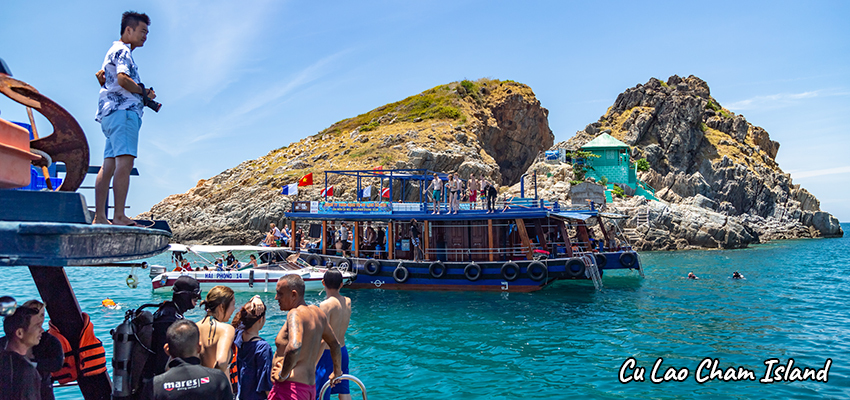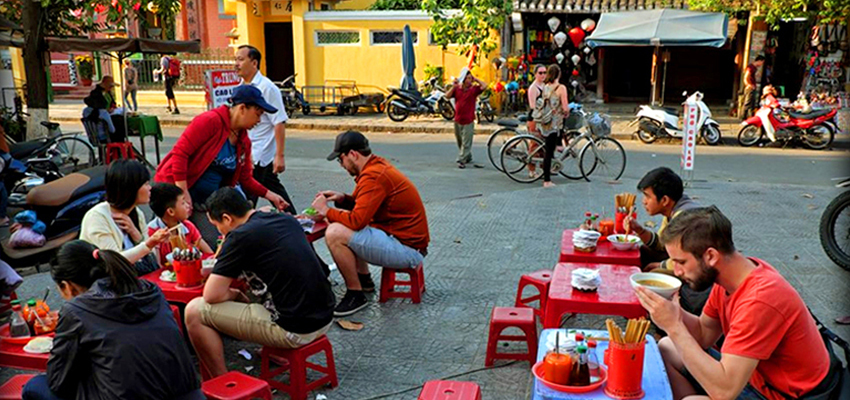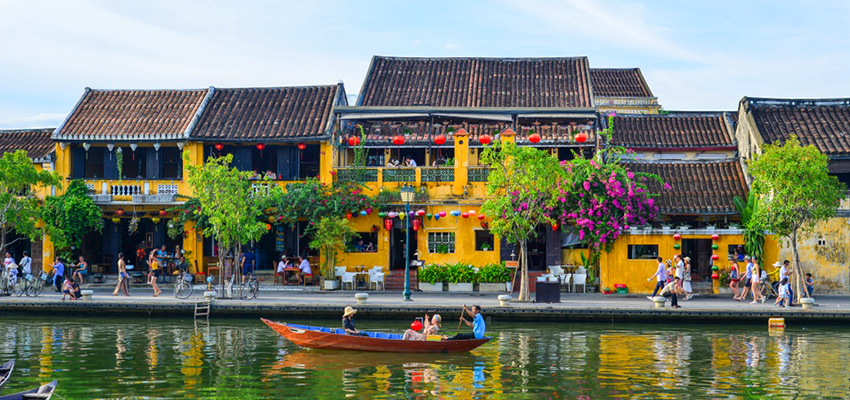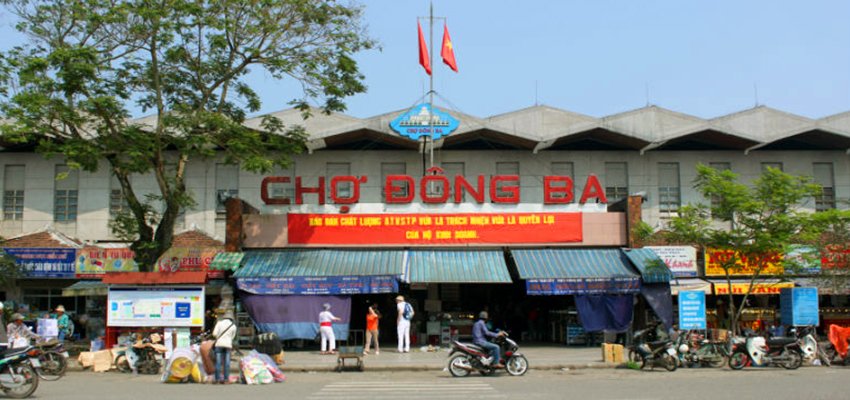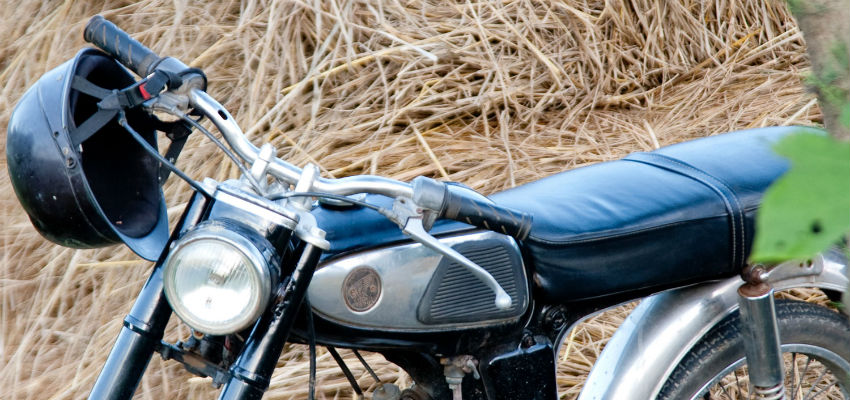Visiting Hoi An with 9 Famous Tourist Attraction
The ancient town of Hoi An is a remarkably well-preserved depiction of a South-East Asian trading port from the 15th to the 19th century. This UNESCO declared World Heritage Site is located in the Quang Nam Province of Central Vietnam.
In addition to the cultural complex itself. The ancient town features more attractions that tourists can consider when visiting Hoi An. These nearby historical locations, which have influenced Hoi An both culturally and economically, are well worth seeing
1. Hoi An Coconut Forest
The Bay Mau Coconut Forest is located in Cam Thanh Commune, Quang Nam Province, about 5 kilometres from the well-known trading port of Hoi An. During the resistance movement against the French and later the Americans. The Cam Thanh Coconut Forest was once known as the base camp of the Vietnam Revolutionary Army. The coconut forest in Hoi An served as a haven as well as a strategic battlefield for the smaller in number Vietnam Revolutionary Army.
As the villagers offer not only the coconut boat rides exploring the Cam Thanh coconut forest but which also thanks to a number of gimmicks. The Hoi An Coconut Forest has been experiencing a surge in visitors. One of these is the coconut boat performance, in which a paddler quickly turns the boat around while providing tourists with a spectacular and thrilling sight. Visitors can also get complimentary coconut leaf origami. One experience to think about when visiting Hoi An is catching a glimpse of the simple life of the fishing village.
Recommended Tour: Cam Thanh Coconut Village Tour
Explore Cam Thanh Coconut village
2. My Son Holy Land
The historic Cham Kingdom built the Hindu temple complex known as My Son Sanctuary, about 40 kilometers away from Hoi An. It was constructed between the fourth and the fourteenth centuries AD, during the rule of Champa kings. The site was used for the royals’ religious rituals. My Son Sanctuary was grand and of the utmost importance to the history of Hinduism in Southeast Asia since it served as the political and religious capital of the Champa Kingdom.
My Son Sanctuary was destroyed after the Champa Kingdom fell and was later rediscovered by a French explorer in 1898. The site had been restored since 1937, but the Vietnam War’s heavy bombardment in the region caused significant destruction. However, My Son Sanctuary’s ruins are still acknowledged as a UNESCO World Heritage Site.
Recommended Tour: My Son Sanctuary Tour – Private Tour
Discovery My Son Sanctuary in Hoi An
3. Tra Que Vegetable Village Hoi An
Approximately 4 kilometres from Hoi An lies the little island where Tra Que Vegetable Village is located. Following the introduction of Hoi An cooking classes for, the vegetable village of Tra Que began drawing tourists. A trip to a neighbouring vegetable village, like the well-known Tra Que Vegetable village. Is typically included in cooking classes so that participants can plant and pick herbs and vegetables that will be used in the Hoi An cooking class.
Recommend Tour: Hoi An Cycling and Cooking Class Tour
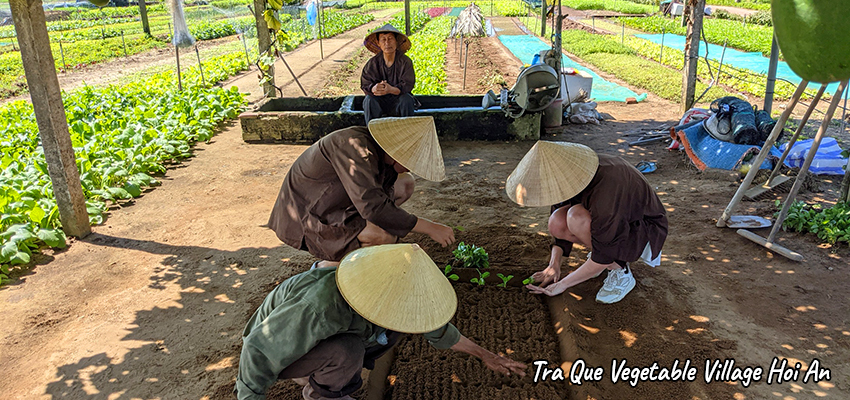
4. Cu Lao Cham Island
Cham Islands, sometimes referred to as Cu Lao Cham, is about 20 kilometers away from Hoi An Old Town. Visitors should be able to get to the islands by a 20-minute boat ride. The Cham Islands are included in the UNESCO Biosphere Reserve Cu Lao Cham – Hoi An, which safeguards the diverse marine life.
As the Cham islands provide superb snorkeling and diving activities. It has become a popular destination for all day excursions when visiting Hoi An. On its largest island, Hon Lao, there are also Buddhist temples and a museum dedicated to the Cham people. Who are thought to have been the initial settlers of Hoi An.
Discovery Cham Island from Da Nang & Hoi An
5. Hoai River Hoi An
The Hoai River runs the length of the historical site of Hoi An. Boat cruises along the Hoai River are available for those who would like to experience Hoi An in an unique manner. Along the river, dozens of boats pass, and spectators may see locals going about their everyday routines and carrying on business. The river glows at night with a variety of lanterns strung across the nearby streets and atop the boats. Visitors will find Hoai River Hoi An at its best during Full Moon Festivals.

6. An Bang Beach
An Bang Beach located in Cam An ward is approximately 5 kilometers away from the center of Hoi An. Due to its stunning cool blue waves, serene atmosphere, and lack of nearby businesses. The quiet white sand An Bang beach has recently emerged as the crowd’s favorite and worth visiting when in Hoi An.

7. Thanh Ha Pottery Village
Hoi An Ancient Town is only 3.4 kilometers away from Thanh Ha Village. It is a village close to the picturesque and well-known Thu Bon River thus. Visitors can get there by boat, motorcycle, vehicle, or even bicycle. The fact that Thanh Ha Pottery Village provides a real sense of Vietnamese culture and traditions is probably one of its best features.
Thanh Ha Pottery Village is a significant spot to see while visiting to Hoi An because of its long and rich history. When a Nguyen Emperor asked skilled and knowledgeable potters from Thanh Ha to assist in the construction of the Imperial City and the Hue Citadel. Which is still standing today, the town gained national attention. Since the artisans demonstrated their skill at these events, a growing number of people became aware of the Thanh Ha Pottery village and eventually spread to different cities as well as surrounding Southeast Asian nations and certain European nations, including France and the Netherlands.
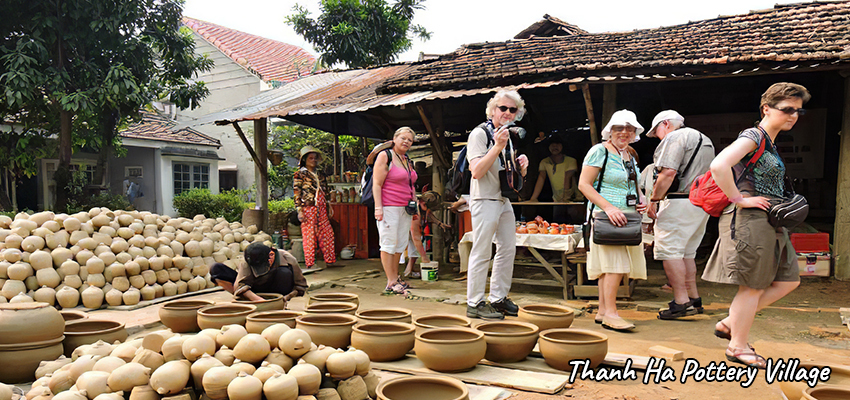
8. Hoi An Memories Land
The Hoi An Impression Theme Park is unlike any other parks in Vietnam. The distinctive theme park is located at 200 Nguyen Tri Phuong, Cam Nam, Hoi An, Quang Nam. In contrast to other theme parks, Hoi An Impression Theme Park’s evening performances are its main attraction. The traditional ao dai of Vietnam is performed in the real world using cutting-edge lighting, staging, and audio effects. Through these, Hoi An’s 400-year-old history is depicted in all its radiance and prosperity. Making it a wonderful diversion from the typical evening spent merely wandering through Hoi An Old Town’s shophouses.
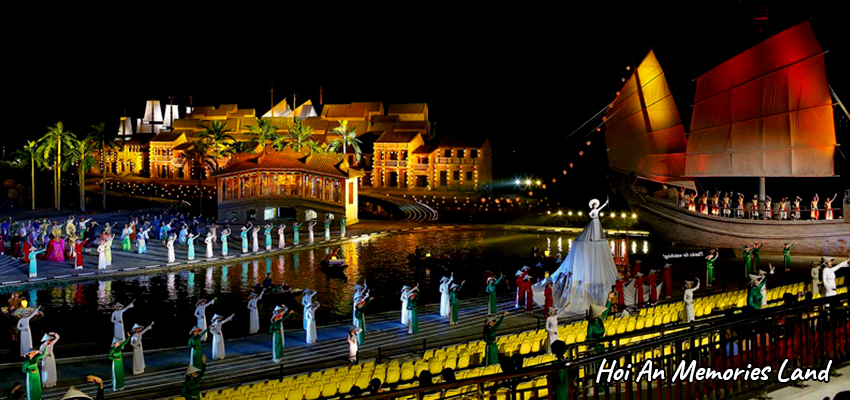
9. Hoi An Old Town
The Hoi An Ancient Town is a particularly well-preserved example of a 15th to the 19th century South-East Asian trading port. This distinctive cultural complex’s architecture and street plan demonstrate the fusion of both local and international influences.
A mix of cultures and styles, from wooden Chinese shophouses, assembly halls and temples to vibrant French colonial structures, beautiful Vietnamese tube houses. The famed Japanese Covered Bridge with its pagoda, reflects the Hoi An’s multicultural history.
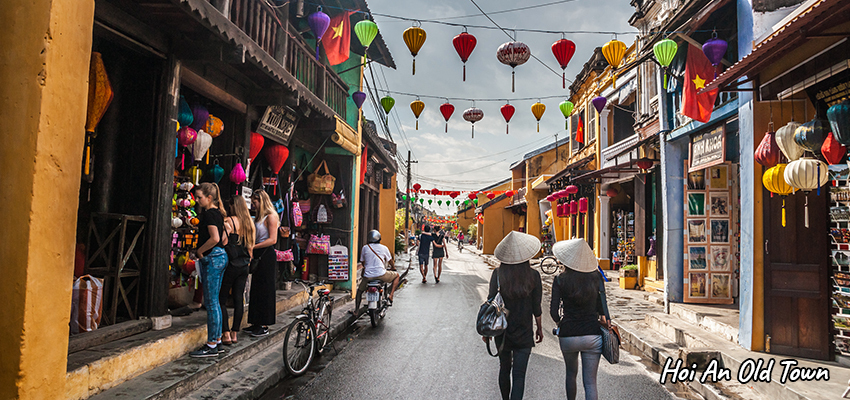
9.1 Hoi An Japanese Bridge
The Japanese Bridge in Hoi An is a skillfully constructed structure that serves as a prominent symbol of the historical site. It is claimed that the Japanese community supported the construction of the Hoi An Japanese Bridge and its pagoda, known as the Cau Pagoda, in the 1590s to connect it with the Chinese neighborhoods.

9.2 Phuc Kien Assembly Hall
Phuc Kien Assembly Hall is located at 46 Tran Phu Street and one of the most popular assembly halls within Hoi An old town. The Phuc Kien Assembly Hall was constructed around 1690 and originally served as a social gathering place for the Chinese ethnic group from Fujian, China. However, it was eventually converted into a temple for the Goddess of the Sea.
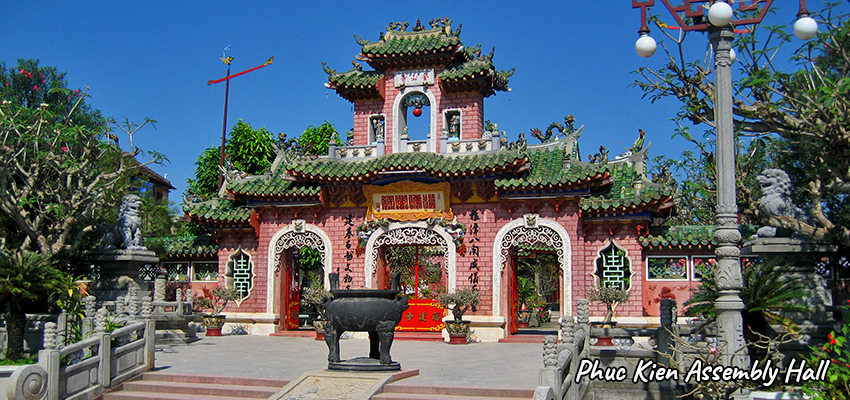
9.3 Central Market Hoi An
The Hoi An Central Market is just next to the iconic Hoi An Ancient Town. Visiting Hoi an Central Market gives a different experience to both residents and tourists. Locals and international visitors typically purchase their goods, food supplies, other essentials, and souvenirs here. This the place where tourists are most likely to find genuine culinary delights. As White Rose, Cau Lau noodles, and Mi Quang noodles.

9.4 Tan Ky Old House
The old house of Tan Ky is located at 101 Nguyen Thai Hoc Street within the heritage site of Hoi An. Tan Ky Old House is a fascinating merchant’s house from the 18th century that encompasses more than 200 years of history and can be deemed a “living museum”.
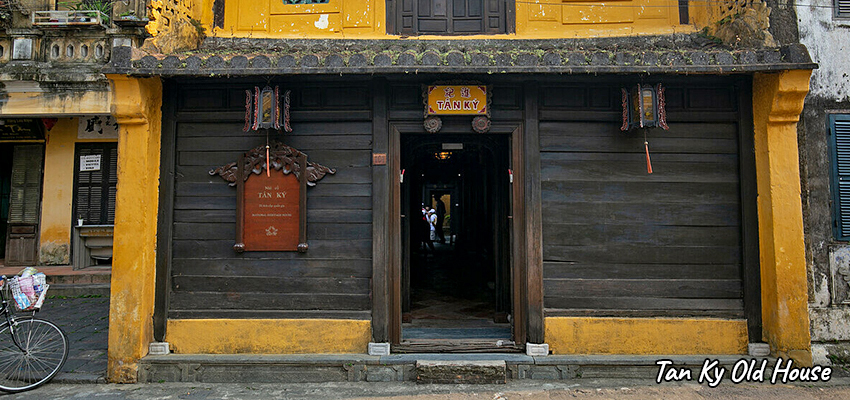
9.5 Ong Pagoda
The Ong Pagoda, also known as the Quan Cong Temple, is situated on Tran Phu Street in the historical site of Hoi An. Quan Cong, an ancient Chinese general who lived during the “Three Warring Kingdoms,” was honored at the Ong Pagoda. The Hoi an Ong Pagoda was constructed in the seventeenth century and has undergone numerous restorations.
















